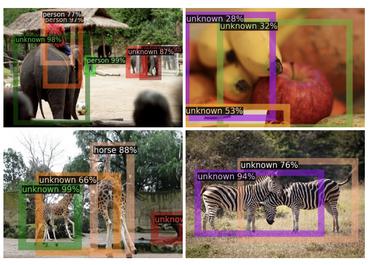BSDP: Brain-inspired Streaming Dual-level Perturbations for Online Open World Object Detection
Humans can easily distinguish the known and unknown categories and can recognize the unknown object by learning it once instead of repeating it many times without forgetting the learned object. Hence, we aim to make deep learning models simulate the way people learn. We refer to such a learning manner as OnLine Open World Object Detection(OLOWOD). Existing OWOD approaches pay more attention to the identification of unknown categories, while the incremental learning part is also very important. Besides, some neuroscience research shows that specific noises allow the brain to form new connections and neural pathways which may improve learning speed and efficiency. In this paper, we take the dual-level information of old samples as perturbations on new samples to make the model good at learning new knowledge without forgetting the old knowledge. Therefore, we propose a simple plug-and-play method, called Brain-inspired Streaming Dual-level Perturbations(BSDP), to solve the OLOWOD problem. Specifically, (1) we first calculate the prototypes of previous categories and use the distance between samples and the prototypes as the sample selecting strategy to choose old samples for replay; (2) then take the prototypes as the streaming feature-level perturbations of new samples, so as to improve the plasticity of the model through revisiting the old knowledge; (3) and also use the distribution of the features of the old category samples to generate adversarial data in the form of streams as the data-level perturbations to enhance the robustness of the model to new categories. We empirically evaluate BSDP on PASCAL VOC and MS-COCO, and the excellent results demonstrate the promising performance of our proposed method and learning manner.
PDF Abstract




 MS COCO
MS COCO